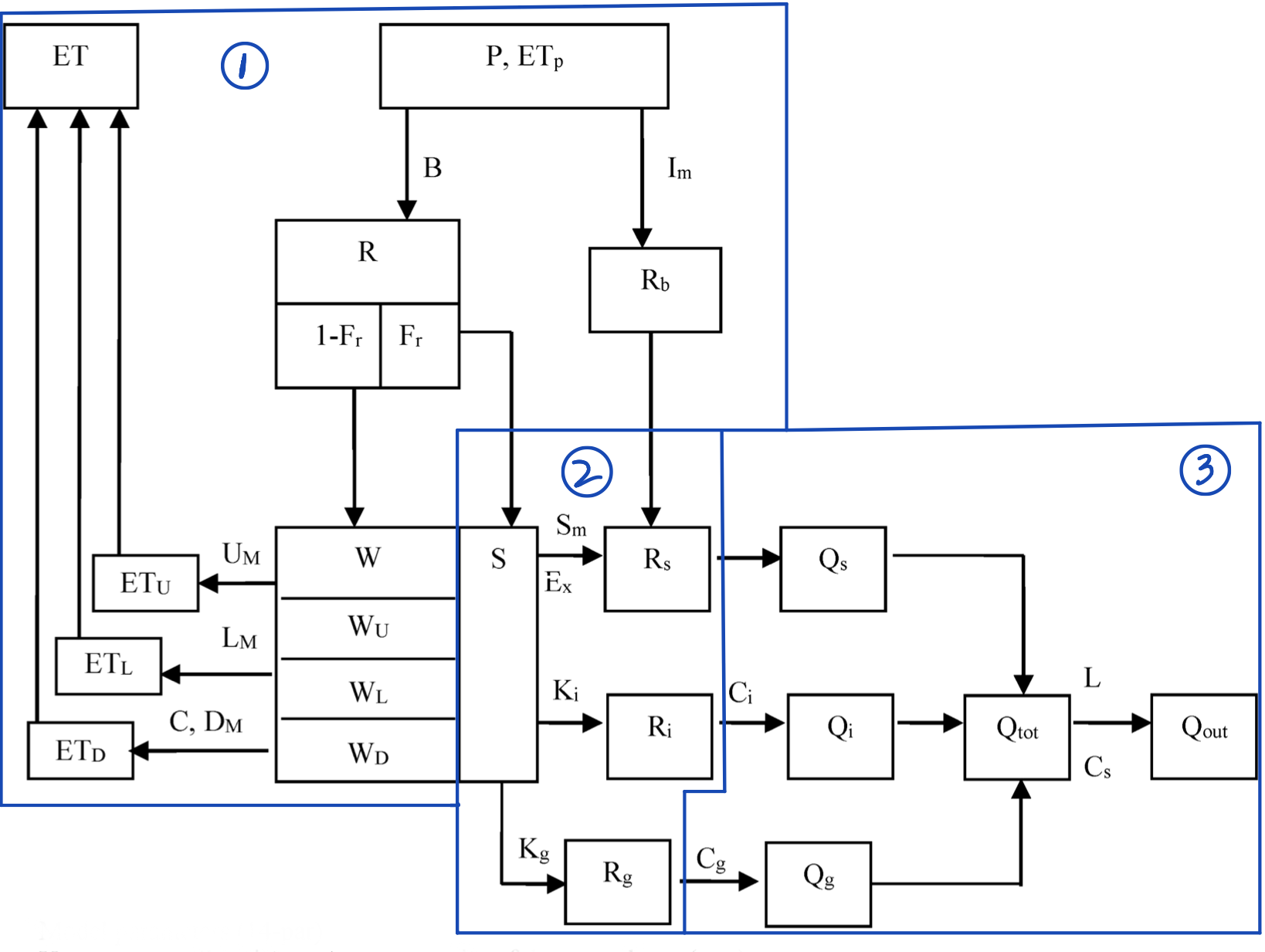Hydro-model-xaj is a python implementation for XinAnJiang (XAJ) model, which is one of the most famous conceptual hydrological model, especially in Southern China.
Not official version, just for learning
Hydro-model-xaj is a Python console program (no graphic interface now). It is still developing, and we have not provided a pip or conda package for hydro-model-xaj yet, so please set up python environment for the code.
If you are new to python, Please install miniconda or anaconda .
Since you see hydro-model-xaj in GitHub, I think you have known a little about git and GitHub at least. If not, you can see this to install git and register your own GitHub account.
Then, fork hydro-model-xaj to your GitHub, and clone it to your local computer (Linux or Windows).
If you have forked it before, please see this tutorial to update it from upstream as our previous version has some errors.
Open you terminal, then input:
# clone hydro-model-xaj, if you have cloned it, ignore this step
git clone <address of hydro-model-xaj in your github>
# move to it
cd hydro-model-xaj
# if updating from upstream, pull the new version to local
git pull
# create python environment
conda env create -f environment.yml
# activate it
conda activate xajThen you can run the following code to try hydro-model-xaj:
cd hydromodel/app
python calibrate_xaj.pyTo use your own data to run the model, we set a data interface, here is the convention:
- All input data for models are three-dimensional numpy array: [time, basin, variable], which means "time" series data for "variables" in "basins"
- Data files should be .npy files with a json file which show the information of the data. We provide sample code in "test/test_data.py" to show how to process your .csv/.txt file to the required format and load your reformatted data
- The name of .npy file and .json file must be "basins_lump_p_pe_q.npy" and "data_info.json". An example could be seen in the "example" directory
- You can set your own dataset when using scripts in the "app" directory like the following code:
python calibrate_xaj.py --data_dir D:/code/hydro-model-xaj/hydromodel/exampleWhen we want to learn about rainfall-runoff process and make forecast for flood, etc. We often use classic hydrological models such as XAJ as baseline because it is trusted by many engineers and researchers. However, after searching in the website very few repositories could be found. One day I happened to start learning Python, so I decided to implement the model with Python. Previous commits for hydro-model-xaj have some errors, but now at least one executable version is provided.
Actually open source science has brought great impact on hydrological modeling. For example, SWAT and VIC are very popular now as they are public with great performance and readable documents; as more and more people use them, they become more stable and powerful. XAJ is a nice model used by many engineers for practical production. We need to inherit and develop it. I think hydro-model-xaj is a good start.
We basically implement the formula in the book -- "Watershed hydrologic simulation"/《流域水文模拟》
Other reference books:
The model mainly include three parts:
For the second part, we provide multiple implementations, because for this module, formula in different books are a little different. One simplest version is chosen as default setting. More details could be seen in the document which will be provided soon (You can see details in the source code directly now).
For the third part -- routing module, we use a model from mizuRoute to generate unit hydrograph for surface runoff (Rs -> Qs), as its parameters are easier to set, and we can optimize all parameters in a uniform way.
We provide two common calibration methods to optimize XAJ's parameters:
Now the model is only for one computing element (typically, a headwater catchment). Soon we will provide calibration for multiple headwater catchments. To get better simulation for large basins, a (semi-)distributed version may be needed, and it is not implemented yet. The following links may be useful:
Other implementations for XAJ:
- https://github.com/wknoben/MARRMoT/blob/master/MARRMoT/Models/Model%20files/m_28_xinanjiang_12p_4s.m
- https://github.com/Sibada/XAJ
If you want to add features for hydro-model-xaj, for example, write a distributed version for XAJ, please create a new git branch for your feature and send me a pull request.
If you find any problems in hydro-model-xaj, please post your questions on issues.
